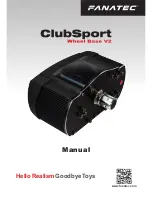
GFK-2571A
Chapter 2 Installation
2-7
2
Installing SFP Devices
SFP (Small Form-Factor Pluggable) devices can be installed in Port 3 and Port 4 of the PROFINET
Controller. See chapter 1 for a list of supported SFP devices, media types and distances. The
specific SFP module installed in each cage must be defined in the Proficy Machine Edition
configuration of the PNC.
Keep the protective plug installed in the SFP device. Following the manuf
acturer’s installation
instructions, insert the device with its electrical contacts oriented toward the inside of the PNC until it
clicks into place.
Warning
Optical SFPs use an invisible laser to generate a fiber-optic signal. Always
keep the port covered if a cable is not installed. Do not look into the open port
if a cable is not installed.
Remove the protective plug to install the cable.
When the PNC powers up, it automatically detects devices plugged into the SFP cages, their type
(fiber, copper, etc.) and their link speed. If an SFP device has been included in the configuration but
is not present in the specified cage, the PNC logs a Loss of Network Port entry to its Local Log
Table. If possible, the PROFINET Controller also logs a fault to the associated RX3i I/O Fault Table.
The module continues to operate with a loss of network port fault.
If the installed SFP device is different from what has been configured, the PNC logs a mismatch
entry to its local log table. If possible, it also logs an informational fault to the associated RX3i
controller’s fault table. The module tries to configure and use the SFP if it is compatible (as listed in
chapter 1). If the PROFINET Controller detects an unsupported SFP type on powerup or when the
SFP is inserted, the PNC adds an entry into its Local Log Table and the RX3i I/O Fault Table (if
possible) and turns the associated port LED red.
















































